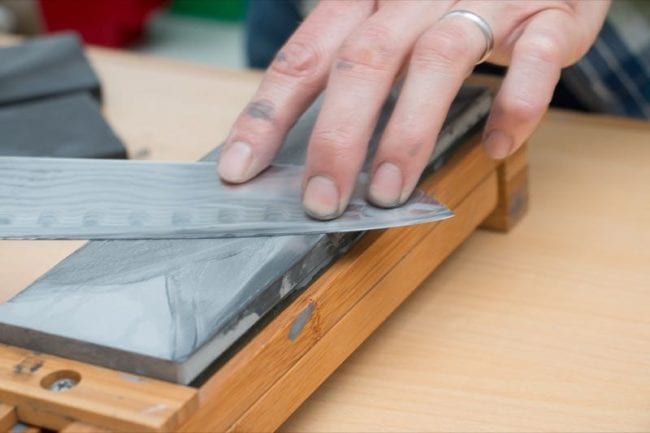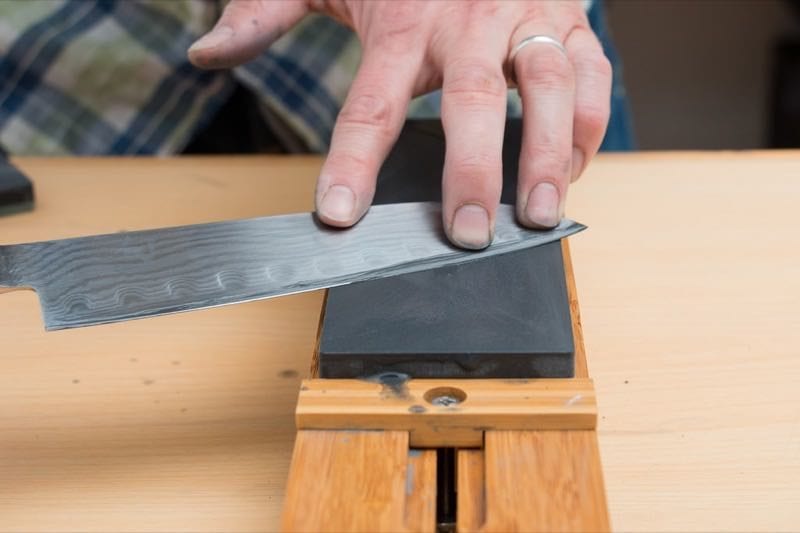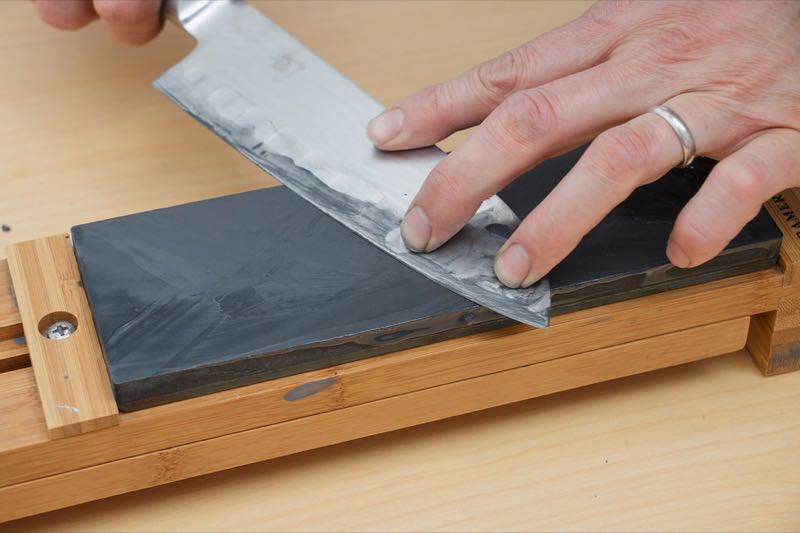Knowing how to use a whetstone to sharpen a knife helps you get close and intimate to the work. It also often results in a better sharpening—and, frankly, it just feels more satisfying!
You can sharpen your knives in any number of ways. There are electric sharpeners, filing systems, and belt systems. Many manufacturers even offer a sharpening service. Use that, however, and you have to mail your knives back to the plant and wait a few weeks for them to return. You could just learn how to do it yourself with a whetstone.
Table of contents
How to Use a Whetstone
Whetstones generally have two sides: coarse and fine grit. The coarse side works to pre-sharpen by grinding off the rough edge and any burrs. The fine grit side finishes off the work by working that dull blade into a super sharp edge.
Saturate the Whetstone
There’s not necessarily a consensus among knife sharpeners about whether to wet your whetstone. (If you want to have some fun—say “whetstone” to a knife enthusiast the way Stewey Griffen says “cool whip” .)
Some folks won’t use water and just go at it dry. Others like to use water or mineral oil. This reduces any heat caused by friction. We prefer to keep things lubed up. You could also simply follow the manufacturer’s recommendations.
To use a whetstone, submerge it in water for at least 5-10 minutes. A longer time period just ensures saturation. Some people we know soak their whetstone for a minimum of 24 hours.

Position the Whetstone
After saturating the whetstone, place it atop a mat or towel. You need something to keep the stone from sliding around, while also trapping wayward water. Some manufacturers make stands or integrated holders. Those work great as well.
If your whetstone has a coarse and fine side, begin with the coarse side. The same goes if you have multiple whetstones.
Position the Knife on the Stone
Using a whetstone to sharpen knives takes a little practice. Most people, however, catch on quickly. Always hold the knife with the handle in your dominant hand. It makes for a safer whetstone sharpening experience. Position the knife across the whetstone at a 45-60 degree angle, with the tip off the edge of the stone. The tip can either be towards you or away from you, depending on your preferred grip.
Find the angle (pitch) of the actual knife blade edge. We see a lot of 15–20 degree angles for kitchen knives. Pocket knives can have angles up to 25-degrees or more. You want to start with the blade of the knife angled diagonally across the whetstone.
Draw the Knife Back and Forth Across the Whetstone
With the fingers of your non-dominant hand on the rear of the blade, pull or “draw” the blade towards you across the length of the stone. Maintain both the angle of the knife across the stone and the angle of the blade. This lets the whetstone work across the entirety of the knife blade, from tip to belly.

Work the knife up and down the whetstone in both directions. Repeat this several times—particularly if you’re working on a dull blade. Each stroke should allow the entirety of the knife blade to move across the whetstone. You don’t want to work on “sections” of the blade but the entire blade at once.
During sharpening, continue to apply water from time to time. As you work, particles from the stone will release. These small particles get trapped in the liquid and form an abrasive paste. Keep everything at a pretty runny consistency.
Flip and Repeat
When the first side has sharpened up, flip the knife over and repeat the process with the other side of the blade.
Move to the Fine Whetstone (If Applicable)
After finishing the coarse grind, flip the whetstone over (or change it out) to sharpen on using the fine grit material. Repeat the exact same process on this side of the whetstone. Remember to always keep the blade angled consistently.
Wrapping It Up
Overall, using a whetstone isn’t rocket science. However, it takes some practice to get it right. Maintaining the angle while moving the knife makes up the biggest learning curve of this blade-sharpening method. Once you dial in a technique, you can start adjusting your angle for specific applications and steel blends that you have.
If you’re an old hand at sharpening knives, and have any tips and tricks for how to use a whetstone, feel free to add them in the comments section below.



